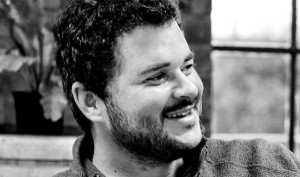SA’s LifeQ breathes life into wearables
SA’s LifeQ breathes life into wearables
You could be forgiven for thinking you’ve wandered onto the set of Star Trek when you visit the offices of LifeQ in Stellenbosch, near Cape Town.
The health technology start-up is pushing the limits of modern technology through its use of “computational systems biology” and “bio-mathematical modelling” to change the way human body functions are measured.
To you and me, that means it’s taking wearable technology to the next frontier.
LifeQ, which has been flying under the radar for the past five years, debuted the first of its products — an optical sensor — at International CES in Las Vegas in January, where it garnered a great deal of attention from the technology world.
Led by CEO Laurie Olivier, executive founder Riaan Conradie, chief science officer Franco du Preez and vice-president Kora Holm, the start-up consists of a 60-person strong multi-disciplinary team of engineers, biologists, scientists, industrial designers and commercial managers.
Conradie completed his PhD in biochemistry with a focus on computational systems biology, which — to put it in simple terms — examines human physiology, using mathematics to describe it.
LifeQ is backed by five Fortune 500 companies, with Olivier leading the US operations, with offices in Atlanta and a satellite operation on the US west coast.
It’s already concluded partnership deals with three companies — including First Alert, which developed the first battery-powered smoke detector in the US — and is in talks with more than 100 more firms.
Conradie says LifeQ anticipated the emergence of wearable fitness devices years ago. But these devices still have big shortcomings, providing only basic information such as calories burnt, he says.
“The more sophisticated devices measure sleep, but can’t tell you why you’ve had five hours of bad sleep. This does not help to address lifestyle changes,” he explains.
“Computational systems biology is able to develop personalised mathematical models to give individuals unique insight into their health status. It gets interesting when you start doing predictive stuff, like why your sleep is affected, or which elements are interacting — be it diet, physical activity or other factors.”
Conradie says the LifeQ team realised early on that they did not want to be in the hardware space as they would find it difficult to compete with established brands. Instead, the company engaged with makers of wearable devices interested in using its technology.
The company has three product offerings: LifeQ Lens, LifeQ Core and LifeQ Link.
LifeQ Lens is a multi-wavelength optical sensor that can be integrated into almost any wearable device.
Conradie says molecules in the blood absorb certain wavelengths. “By shining different wavelengths into the skin, the photosensor is able to measure different wavelengths and determine different statistics, like your heart rate.”
The company provides this sensor to companies under licence. The Lens is being used to target the fitness market first, it says.
“We are able accurately to measure heart rate, VO2 max (a measure of the maximum oxygen an athlete can use) and give accurate energy expenditure,” Conradie explains.
“LifeQ Lens is also able to say whether the [body’s] aerobic or anaerobic system is activated during exercise.”
LifeQ Core, meanwhile, takes this input to the next level. The data streams from Lens use mathematical modelling to create computer simulations of the wearer’s physiology. This is used to better understand the biochemical reactions occurring in the body and what drives them. Core measures calories worked off and can tell precisely the percentage of carbohydrates, fats and proteins burnt.
Finally, LifeQ Link is an open-source platform that allows app developers, health insurance companies and others to integrate their devices or apps into the system to give users insight into the functioning of their bodies.
“Apart from the immediate results available to those using wearable devices, we enable data gathering from all our partners,” says Conradie. This information can be used in a variety of ways to predict health trends.
Apart from the exercise sector, LifeQ has uses in nutrition, medicine, sleep and stress management, and even population-level data research across large numbers of users.
“The future of wearables is not wearables per se,” says Conradie. “Rather, it’s what we’re able to do with the information gathered. By using non-invasive devices, we can build on our main vision of giving people a true understanding of their health.”
Dr McCoy would be impressed.
You can read more about LifeQ on the company’s website
Article and image source: techcentral.co.za

